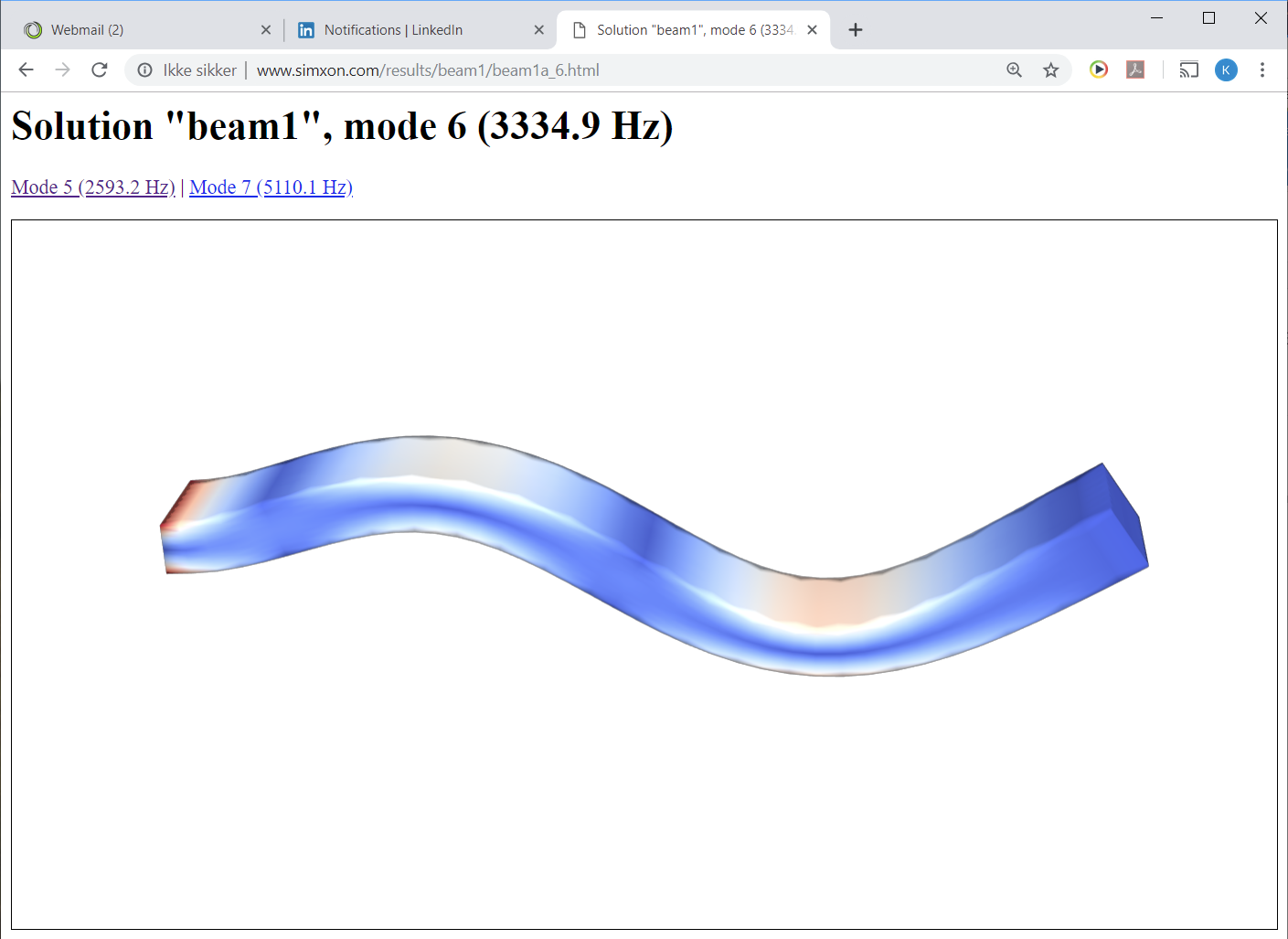
Disseminating CAE results in 3D on any device
Have a look at this auto-generated 3D animation of cantilever beam vibration modes which you can study by turning the object with your computer mouse: http://www.simxon.com/results/beam1/beam1a_1.html (enter an “r” to reset the view, if necessary).
Or open this PDF file with a barebone, but still genuinely three-dimensional presentation of the first bending mode: http://www.simxon.com/results/beam1/beam1aa_1_0.pdf (you may need to enable 3D content: https://helpx.adobe.com/acrobat/using/enable-3d-content-pdf.html).
Did you know that this was possible with ordinary browser technology or with the ordinary Adobe Reader?
It is possible, even with – or perhaps because of – open source software which anyone can use at no cost.
The traditional showstoppers
The big CAE vendors claim that they are day by day getting more and more democratic. They are, if you by “democratic” understand that their software is getting easier and easier to use for a layman.
My counterarguments have always been:
- Why should any responsible company put the design of future products into the hands of laymen?
- Why should any responsible company employ laymen at all?
- Does each and every responsible company know what they are really paying for their CAE and what they are actually getting for their money?
- Concerning the previous list item, has each and every responsible company realized the effect of CAE software licenses on the marginal costs of any upgrade considered (I estimate that they are tripled)?
- As even engineering design work has its repetitive moments, why not automate repeated CAE procedures in the first place?
- Why not establish corporate CAE procedures which leverage the notion that CAE results should be generated by the few and used by the many?
“Used by the many” is the subject of this article. Already at the start of this millennium, I created 3D intranet reporting technology which relied on a binary plugin for Internet Explorer. This technology enabled my colleagues at the time to study my analysis results in 3D on their own hand at their own pace. My intent was that as many people as possible should understand the design and the design options as well as possible. I claim that I got pretty close.
The big CAE vendors rarely offer results viewing technology which can really be used by the many. License-free viewers and automated report generators definitely exist in their product portfolios. Such items just do not walk the extra mile, I think.
Putting CAE results on the intranet is a very good idea
The World of today is full of low-cost devices which can cache and display large amounts of 3D information. If your phone cannot, you tablet probably can (worth a try, I guess). Nobody could foresee this tech revolution just a few decades ago. Leveraging these capabilities seems to me an obvious choice. Nevertheless – and please correct me if anyone can – I feel rather lonesome on my little turf…
I still think that the vibration modes of a simple cantilever beam can and should be communicated to laymen like this. Or like this if you really want a portable document file (remember to enable 3D graphics if you haven't done so already).
In order to achieve the above results, I didn’t spend a penny on licensed software. I just used
- Code_Aster/Salome-Meca (which comes with a built-in ParaView variant)
- x3dom technology available on most browsers (but apparently not on Microsoft Edge)
- Meshlab (to create a U3D file)
- Texmaker (embeds the U3D file into a PDF file)
(the latter two only for PDF file creation). Plus of course some quick-and-dirty Python coding of my own.
Possible use cases for these presentation techniques
The present state and refinement level of the graphics presented above is of course rudimentary – I just wanted to highlight some options that you may not be aware of. For intranet use, my favorite way of presenting CAE results is to have an HTML table which compares different design options as columns, and which presents key values and links to 3D displays as rows. Plus of course a well-considered text essay setting the present study in any relevant context (also with hyperlinks).
Engineers have been accustomed to hyperlinks for almost three decades. Nevertheless, many engineering reports are monolith PDF documents presenting – at worst – autogenerated information which nobody wants to read. This way of information handling assures neither quality nor safety. Tons of repeated, unstructured information inhibit the focus and alertness necessary to perceive the wolf when it is actually coming.
Monolithic information is simply counterintuitive. Giving – by means of hyperlinks – the layman reader the option to study the subject on a detail level of her own choice is way better.
You can do it yourself or you can call Simxon
Just a small commercial interlude – please bear over with me...
Acknowledgement
Thanks to Lee R. Linnemann who guided me through important steps on the way.

